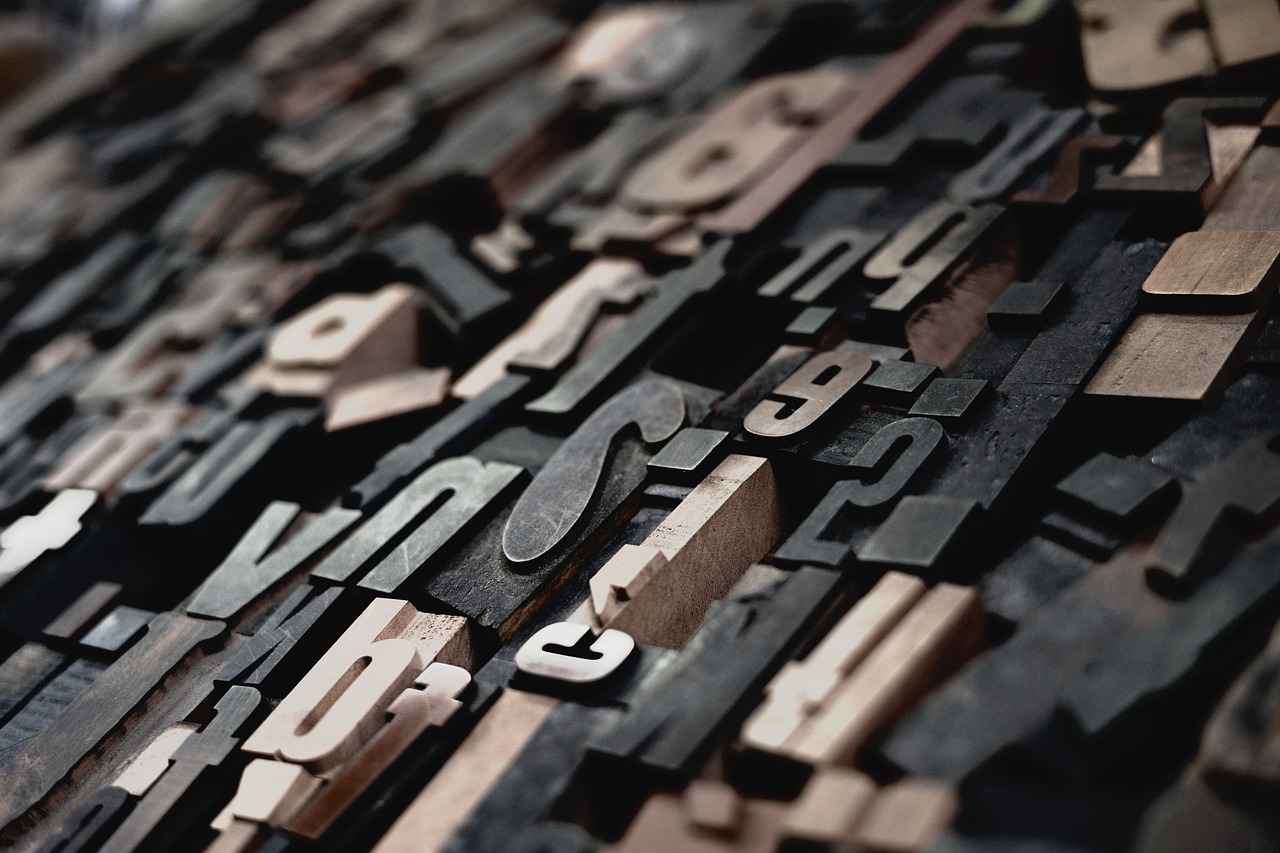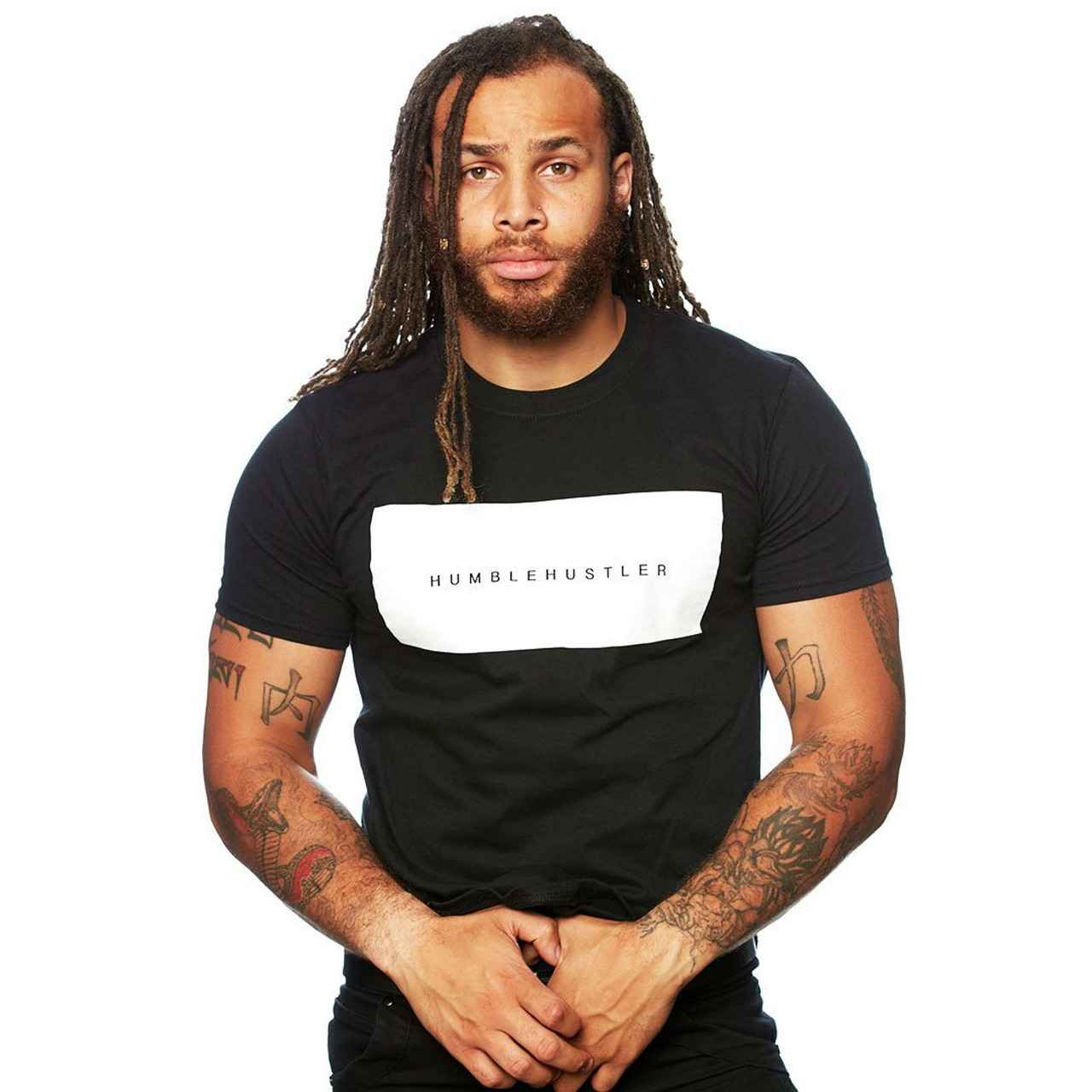This comprehensive guide explores everything you need to know about custom t-shirt printing, including techniques, materials, design tips, and how to choose the right service for your needs.
What is Custom T-Shirt Printing?
Custom t-shirt printing is the art of creating unique designs on t-shirts using various printing methods. It allows individuals and businesses to express their creativity and brand identity. Whether for personal use or promotional purposes, understanding the different printing techniques is essential for achieving the desired outcome.
Popular T-Shirt Printing Techniques
- Screen Printing: A traditional method that uses stencils to apply ink. Known for its durability and vibrant colors, it’s ideal for bulk orders.
- Direct-to-Garment (DTG): This modern technique prints designs directly onto fabric, allowing for intricate details and a wide color range.
- Heat Transfer: Involves printing a design onto a special paper and then transferring it to the t-shirt using heat. It’s suitable for small runs and complex designs.
- Sublimation: A method that dyes the fabric itself, resulting in long-lasting prints. Best suited for polyester fabrics.
Choosing the Right Fabric for Your T-Shirt
The fabric you choose greatly influences the print quality and comfort of the t-shirt. Here are some popular options:
- Cotton: Soft and breathable, cotton is a favorite for its comfort and print quality.
- Polyester: Known for its durability and moisture-wicking properties, it’s ideal for athletic wear.
- Blends: Combining cotton and polyester offers the best of both worlds, enhancing comfort and durability.
Design Tips for Custom T-Shirts
Creating a standout design is key to successful custom t-shirts. Here are some tips:
- Color Choices: Use color theory to select hues that resonate with your target audience.
- Typography: Choose fonts that are readable and complement your design.
- Layout: Ensure your design is balanced and visually appealing.
Finding the Right Custom T-Shirt Printing Service
Choosing a reliable printing service is crucial. Consider the following:
- Quality: Look for customer reviews and request samples to assess print quality.
- Pricing: Understand different pricing models and find a service that fits your budget.
- Turnaround Time: Ensure the service can meet your deadlines.
Conclusion: Making the Most of Your Custom T-Shirt Printing Experience
Custom t-shirt printing is a fantastic way to express individuality and promote brands. By understanding the various techniques, materials, and services available, you can create stunning designs that truly resonate with your audience.

What is Custom T-Shirt Printing?
Custom t-shirt printing is a creative process that allows individuals and businesses to express their unique identities through personalized apparel. This method involves applying various designs to t-shirts using different printing techniques, making it possible to create everything from simple graphics to intricate artworks. In this section, we will explore the fundamentals of custom t-shirt printing and the diverse methods available for personalization, ensuring you have a solid understanding of how to make your vision come to life.
The essence of custom t-shirt printing lies in its ability to transform a plain garment into a canvas for self-expression. Whether you’re looking to promote a brand, commemorate an event, or simply showcase your artistic flair, custom t-shirt printing offers a versatile solution. Different printing techniques cater to various needs, allowing for flexibility in design, color, and fabric choice.
One of the most popular methods is screen printing, which involves creating a stencil and layering ink to achieve vibrant designs. Another method, direct-to-garment (DTG), allows for full-color prints with intricate details, making it ideal for smaller runs or one-off designs. Heat transfer printing is also common, where designs are printed on transfer paper and then applied to the fabric using heat. Lastly, sublimation printing allows for dyeing the fabric itself, resulting in a smooth finish that is both durable and vibrant.
Understanding these techniques and their applications is crucial when embarking on your custom t-shirt printing journey. Each method has its own set of advantages and limitations, which can significantly impact the final product. By familiarizing yourself with these options, you can make informed decisions that align with your specific needs and goals.
In conclusion, custom t-shirt printing is not just about putting ink on fabric; it’s about creating something that resonates with your audience or reflects your personality. As you delve deeper into this exciting world, you’ll discover endless possibilities for creativity and expression.

Popular T-Shirt Printing Techniques
The Ultimate Guide to Custom T-Shirt Printing
Custom t-shirt printing has become a popular way for individuals and businesses to express themselves through unique designs. In this section, we will delve into the , exploring their advantages, disadvantages, and best applications.
- Screen Printing: This traditional method involves creating a stencil for each color in the design. It is known for its durability and vibrant colors, making it an excellent choice for bulk orders. However, it may not be cost-effective for smaller runs.
- Direct-to-Garment (DTG) Printing: A modern technique that prints directly onto the fabric using inkjet technology. DTG is ideal for intricate designs and allows for a wide range of colors. It’s perfect for small batches or custom designs but may not be as durable as screen printing.
- Heat Transfer Printing: This method involves printing a design onto a special transfer paper and then applying heat to transfer the design onto the t-shirt. It’s versatile and suitable for small runs but can sometimes result in a less durable print compared to screen printing.
- Sublimation Printing: Sublimation is a dye-based printing method that infuses the dye into the fabric. This technique works best on polyester fabrics and allows for vibrant, all-over designs. However, it is limited to light-colored materials.
Each of these methods has its own set of advantages and is suitable for different projects. When choosing a printing technique, consider factors such as the number of shirts needed, the complexity of the design, and the fabric type. Understanding these techniques can help you make an informed decision that meets your specific needs.
In conclusion, exploring various t-shirt printing techniques allows you to find the best fit for your project, ensuring that your custom t-shirts are not only visually appealing but also durable and suitable for your intended use.
Screen Printing
is a time-honored technique that has been a staple in the world of custom apparel for decades. This method involves creating a stencil, or screen, for each color in a design, allowing for precise and vibrant reproductions. The process begins with the preparation of the screens, which are coated with a light-sensitive emulsion. Once the design is transferred onto the screen, ink is pushed through the mesh onto the fabric, layer by layer, resulting in a striking final product.
One of the standout features of screen printing is its durability. The inks used are designed to withstand multiple washes without fading, making this method ideal for items that will see frequent use, such as t-shirts for events, uniforms, or promotional merchandise. Additionally, screen printing can produce vivid colors that stand out, making it a popular choice for eye-catching designs.
When considering screen printing, it’s essential to understand its ideal applications. This technique shines in bulk orders, where the cost per unit decreases significantly with quantity. Businesses often turn to screen printing for large runs of promotional items or branded apparel due to its efficiency and cost-effectiveness. However, for smaller orders or designs with intricate details and multiple colors, other methods like direct-to-garment (DTG) printing may be more suitable.
In conclusion, screen printing remains a favored choice for many due to its reliability and quality. Whether you are looking to promote your brand, create a unique design, or outfit a team, understanding the strengths of screen printing can help you make an informed decision that meets your needs.
Advantages of Screen Printing
Screen printing is a time-tested method that has remained a favorite in the custom t-shirt printing industry. This technique offers several advantages that make it particularly appealing for businesses and events looking to create high-quality apparel.
- Vibrant Colors: One of the standout features of screen printing is its ability to produce bold and vibrant colors. The process uses thick inks that sit on top of the fabric, resulting in rich, eye-catching designs that stand out.
- Durability: Screen-printed designs are known for their longevity. The inks used are highly resistant to fading, cracking, and peeling, ensuring that your custom t-shirts maintain their quality even after numerous washes.
- Cost-Effective for Bulk Orders: When it comes to large quantities, screen printing becomes a cost-effective solution. The setup costs are offset by the lower price per unit, making it ideal for events, team uniforms, or promotional merchandise.
- Versatility: This printing method can be applied to various types of fabrics and materials, including cotton, polyester, and blends. This versatility allows for a wide range of applications, from casual wear to performance apparel.
- Customizability: Screen printing provides the ability to create unique designs tailored to specific needs. Whether it’s a simple logo or a complex graphic, the possibilities are endless.
In summary, screen printing remains a popular choice for custom t-shirt production due to its vibrant colors, durability, and cost-effectiveness for bulk orders. As businesses and individuals seek to make a statement through custom apparel, understanding the advantages of this technique can help in making informed decisions.
Disadvantages of Screen Printing
Screen printing is a popular method for creating custom t-shirts, but it does have its limitations, particularly when it comes to small order quantities. While this technique excels in producing vibrant and durable prints for large runs, the cost-effectiveness significantly diminishes for smaller batches.
One of the main drawbacks of screen printing is the setup cost. Each design requires the creation of a separate screen for every color used, which can lead to high initial expenses. If you’re only looking to print a few shirts, these costs can make screen printing financially impractical.
Additionally, the time required for setup and printing can be a disadvantage. The process involves multiple steps, including screen preparation, ink application, and curing. For small orders, this can lead to longer turnaround times compared to other methods like Direct-to-Garment (DTG) printing, which is more suitable for single or small batch prints.
Another limitation is the design complexity. Screen printing is best suited for designs with a limited number of colors and simple graphics. Intricate designs or those requiring a gradient or photographic quality may not translate well, leading to a less than satisfactory result.
In summary, while screen printing remains a favored choice for large-scale production due to its durability and vibrant colors, it is essential to consider these disadvantages when planning your custom t-shirt project. For smaller quantities or more complex designs, exploring alternative printing methods may provide a more suitable solution.
Direct-to-Garment (DTG) Printing
is a revolutionary method in the world of custom t-shirt printing, enabling creators to print intricate designs directly onto fabric using specialized inkjet technology. This technique has gained immense popularity due to its ability to produce high-quality images with a vibrant color palette.
One of the primary benefits of DTG printing is its capacity for detailed designs. Unlike traditional methods, DTG allows for complex graphics and photographs to be printed with precision, making it ideal for artists and brands looking to showcase their creativity. Additionally, the range of colors achievable through this method is significantly broader, allowing for more vibrant and eye-catching prints.
Another advantage of DTG printing is its cost-effectiveness for small runs. Businesses and individuals can order just one or a few shirts without incurring the high setup costs associated with screen printing. This flexibility makes DTG an excellent choice for custom designs, promotional items, or personalized gifts.
However, there are some considerations to keep in mind. DTG printing typically works best on 100% cotton fabrics, which can limit options for those seeking to print on synthetic materials. Additionally, while DTG is efficient for smaller orders, the speed of production may be slower compared to bulk screen printing, which can be a factor for large-scale needs.
In terms of best use cases, DTG printing shines in scenarios where detailed artwork, gradients, and photographic images are required. It is particularly popular among small businesses, artists, and e-commerce platforms that offer custom apparel. The ability to print on demand also means that inventory costs can be minimized, making it an attractive option for startups and niche brands.
In conclusion, DTG printing represents a modern solution for custom t-shirt printing, combining quality, versatility, and efficiency. Whether you’re an artist looking to bring your designs to life or a business seeking to create unique merchandise, DTG offers a reliable and exciting avenue to explore.

Choosing the Right Fabric for Your T-Shirt
The fabric you select for your custom t-shirt plays a crucial role in determining the overall quality, comfort, and appearance of the final product. This section delves into some of the most popular materials used in t-shirt production, including cotton, polyester, and various blends, while also discussing their compatibility with different printing techniques.
| Fabric Type | Characteristics | Best for Printing Techniques |
|---|---|---|
| Cotton | Soft, breathable, and comfortable; excellent print quality. | Screen Printing, DTG |
| Polyester | Durable, moisture-wicking, and quick-drying. | Sublimation, Heat Transfer |
| Blends (Cotton/Polyester) | Combines the comfort of cotton with the durability of polyester. | All Techniques |
Cotton t-shirts are favored for their comfort and excellent print quality. They are ideal for screen printing and direct-to-garment (DTG) methods, as the natural fibers absorb ink well, resulting in vibrant and long-lasting designs. However, it’s important to note that 100% cotton may shrink after washing, so pre-shrunk options are recommended.
Polyester, on the other hand, is known for its durability and moisture-wicking properties, making it a great choice for athletic wear. It performs exceptionally well with sublimation printing, where the ink is infused into the fabric, ensuring no fading or peeling. However, it may not provide the same soft feel as cotton.
Blended fabrics offer the best of both worlds. By combining cotton and polyester, these fabrics provide comfort and durability, making them suitable for various printing techniques. They are especially versatile, accommodating everything from screen printing to heat transfer.
In conclusion, selecting the right fabric for your custom t-shirt is essential for achieving the desired look and feel. Consider the printing technique, intended use, and personal preference to make an informed decision that enhances your custom t-shirt experience.
Cotton T-Shirts
have long been a favorite choice among consumers and brands alike, primarily due to their exceptional comfort and print quality. As a natural fiber, cotton is soft against the skin, making it ideal for casual wear. However, it’s essential to explore both the advantages and potential drawbacks of using cotton for custom printing.
One of the most significant advantages of cotton is its breathability. This feature allows for excellent air circulation, making cotton t-shirts comfortable to wear in various climates. Additionally, cotton has a natural ability to absorb moisture, keeping the wearer dry and comfortable during physical activities.
When it comes to print quality, cotton provides a smooth surface that allows for vibrant colors and detailed designs. This characteristic makes it an excellent choice for various printing techniques, including screen printing and direct-to-garment (DTG) printing. The result is a high-quality finish that can withstand multiple washes without fading.
However, cotton t-shirts are not without their drawbacks. One potential issue is that 100% cotton can shrink after washing, which may alter the fit of the garment. To mitigate this, many brands offer pre-shrunk cotton options or blends with synthetic fibers that help maintain shape and size.
Another consideration is that while cotton is durable, it may not be as resistant to wear and tear as synthetic materials. Cotton t-shirts can show signs of fading or wear over time, especially if exposed to harsh washing conditions.
In conclusion, cotton t-shirts are an excellent option for custom printing, offering a combination of comfort, breathability, and vibrant print quality. However, it’s essential to be aware of the potential drawbacks, such as shrinkage and durability concerns. By weighing these factors, you can make an informed decision when selecting cotton for your custom t-shirt projects.
Polyester and Blends
When it comes to custom t-shirts, the choice of fabric can significantly impact both performance and aesthetics. Polyester and its blends, particularly with cotton, have gained popularity due to their unique properties that cater to a wide range of needs.
Durability and Longevity
One of the standout features of polyester is its remarkable durability. Unlike pure cotton, which can wear out over time, polyester maintains its shape and color even after multiple washes. This resilience makes it an excellent choice for custom t-shirts that are intended for regular use, such as uniforms or promotional apparel.
Moisture-Wicking Properties
Another significant advantage of polyester is its moisture-wicking capabilities. This means that it effectively draws sweat away from the body, keeping the wearer cool and dry. This feature is particularly beneficial for athletic wear, making polyester blends an ideal choice for sports teams or fitness enthusiasts looking for comfortable and functional apparel.
Comfort and Breathability
While polyester is known for its durability, blending it with cotton can enhance comfort. The combination results in a fabric that is not only soft against the skin but also breathable. This ensures that while the t-shirt is robust, it does not compromise on comfort, making it suitable for various occasions, from casual outings to corporate events.
Visual Appeal
In addition to functionality, polyester and cotton blends offer vibrant colors and prints. The fabric holds dye well, ensuring that your custom designs remain sharp and eye-catching. This visual appeal is essential for brands looking to make a memorable impression through their apparel.
Conclusion
In summary, choosing polyester and cotton blends for your custom t-shirts can enhance both performance and aesthetics. With their durability, moisture-wicking properties, comfort, and vibrant colors, these fabrics are an excellent choice for anyone looking to create high-quality custom apparel.
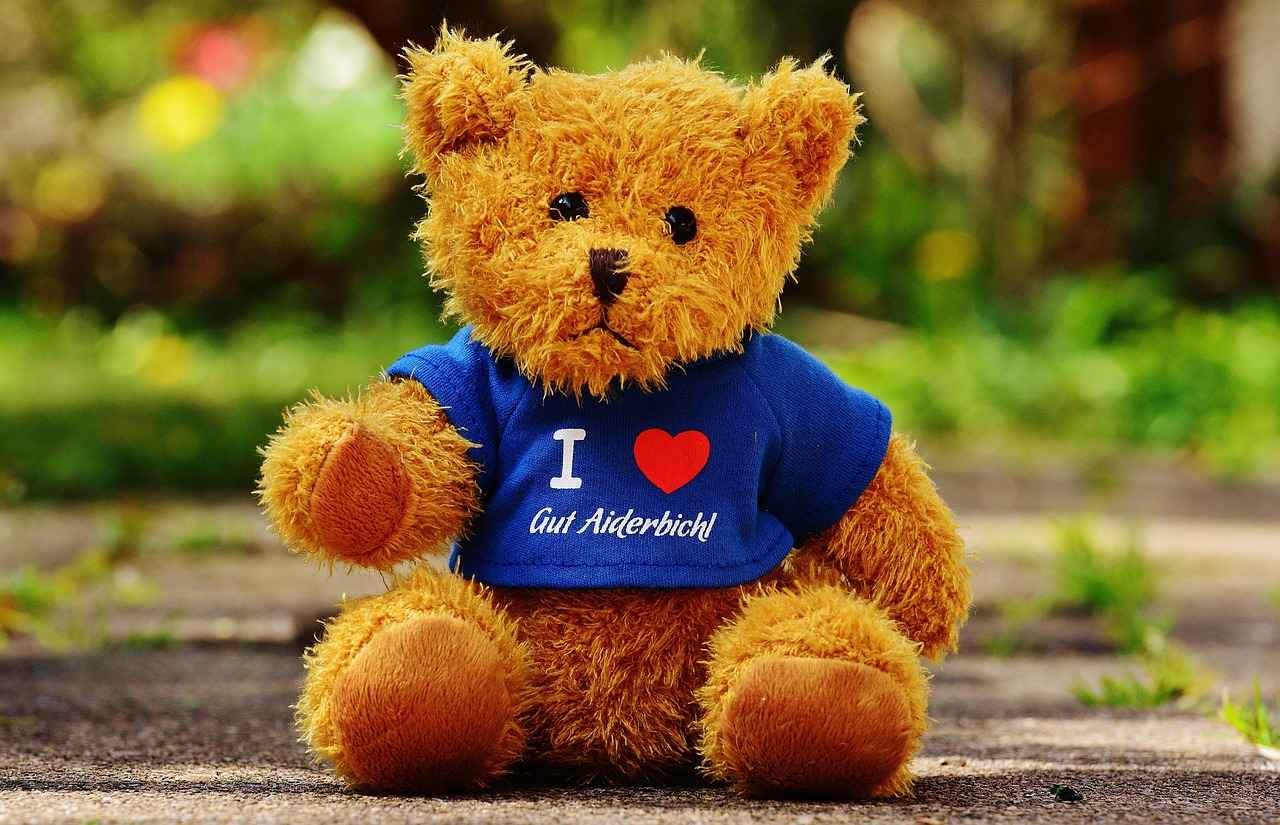
Design Tips for Custom T-Shirts
Designing custom t-shirts is an exciting venture that allows for personal expression and creativity. To create a truly eye-catching design, it is essential to consider various elements that contribute to the overall appeal of the shirt. This section provides practical tips on design elements, color choices, and layout considerations to help you craft the perfect t-shirt design.
1. Focus on Design Elements
- Imagery: Use high-quality images or graphics that resonate with your target audience. Consider using vector graphics for scalability.
- Branding: Incorporate your logo or brand colors to create a cohesive look that strengthens brand recognition.
- Theme: Decide on a theme that aligns with the message or purpose of the t-shirt, whether it’s for an event, promotion, or personal use.
2. Color Choices Matter
Colors play a crucial role in attracting attention and conveying emotions. When selecting colors, keep the following in mind:
- Color Harmony: Use complementary colors to create a visually appealing design. Tools like Adobe Color can help you find harmonious color schemes.
- Contrast: Ensure there is enough contrast between the background and the design elements for better visibility.
- Psychology of Colors: Different colors evoke different feelings. For example, blue often conveys trust, while red can evoke excitement.
3. Layout Considerations
The layout of your design is just as important as the design elements themselves. Consider the following:
- Balance: Strive for a balanced design that distributes visual weight evenly across the shirt.
- Hierarchy: Establish a clear hierarchy by placing the most important elements in prominent positions.
- Readability: Ensure that any text is legible from a distance. Choose fonts that are easy to read and appropriate for the theme.
By applying these design tips, you can create custom t-shirts that are not only visually appealing but also resonate with your audience. Remember, the key to a successful design lies in the thoughtful integration of design elements, color choices, and layout considerations.
Color Theory in T-Shirt Design
Color theory plays a pivotal role in the world of t-shirt design. Understanding how colors interact can significantly enhance the appeal of your designs and make them more engaging for your audience. By mastering the principles of color theory, you can create t-shirts that not only look great but also resonate emotionally with your target market.
Colors are often categorized into three main groups: primary, secondary, and tertiary. Primary colors (red, blue, yellow) serve as the foundation for creating other colors. Secondary colors (green, orange, purple) are formed by mixing primary colors, while tertiary colors result from mixing primary and secondary colors. Understanding these relationships can help you craft a harmonious color palette for your t-shirt designs.
Additionally, consider the color wheel, which illustrates how colors relate to one another. Complementary colors, which are opposite each other on the wheel, create a striking contrast and can grab attention. For example, pairing blue with orange can make your design pop. On the other hand, analogous colors, which are next to each other on the wheel, create a more subtle and cohesive look, ideal for designs that aim for a softer appeal.
When selecting colors, it’s essential to think about your audience and the emotions you want to evoke. For instance, warm colors like red and yellow can convey energy and excitement, while cool colors like blue and green often evoke calmness and tranquility. Understanding the psychology of color can guide you in making choices that resonate with your target demographic.
Moreover, consider the context in which your t-shirts will be worn. Bright colors may be suitable for casual settings, while muted tones might be more appropriate for professional environments. Always keep the end-use in mind to ensure your design meets the expectations of your audience.
In conclusion, by applying the principles of color theory, you can elevate your t-shirt designs, making them not only visually appealing but also emotionally impactful. Experiment with different color combinations and consider the emotional responses they elicit to create designs that truly stand out in the market.
Using Typography Effectively
Typography is a crucial element in the realm of t-shirt design, serving as a bridge between your message and your audience. The right font can not only enhance readability but also evoke specific emotions and reactions from viewers. Below, we delve into key aspects of selecting fonts that align with your design vision.
- Understand Your Message: Before choosing a font, consider the core message you want to convey. Are you aiming for something fun and playful, or are you looking for a more serious tone? The font should reflect the essence of your message.
- Readability is Key: A design is only as good as its legibility. Select fonts that are easy to read from a distance. Avoid overly decorative fonts for large text, as they can be hard to decipher.
- Complementing Design Elements: Ensure that your chosen font complements other design elements on the shirt. The font style, size, and color should harmonize with graphics, images, and overall color schemes.
- Font Pairing: Sometimes, using more than one font can enhance your design. Pair a bold font with a more delicate one to create visual interest. However, limit your selection to two or three fonts to maintain a cohesive look.
- Consider the Audience: Tailor your font choices to the preferences of your target audience. Younger audiences may prefer modern, trendy fonts, while older demographics might favor classic styles.
In conclusion, effective typography can elevate your t-shirt design from ordinary to extraordinary. By carefully selecting fonts that resonate with your message and audience, you can create a visually appealing and impactful product.
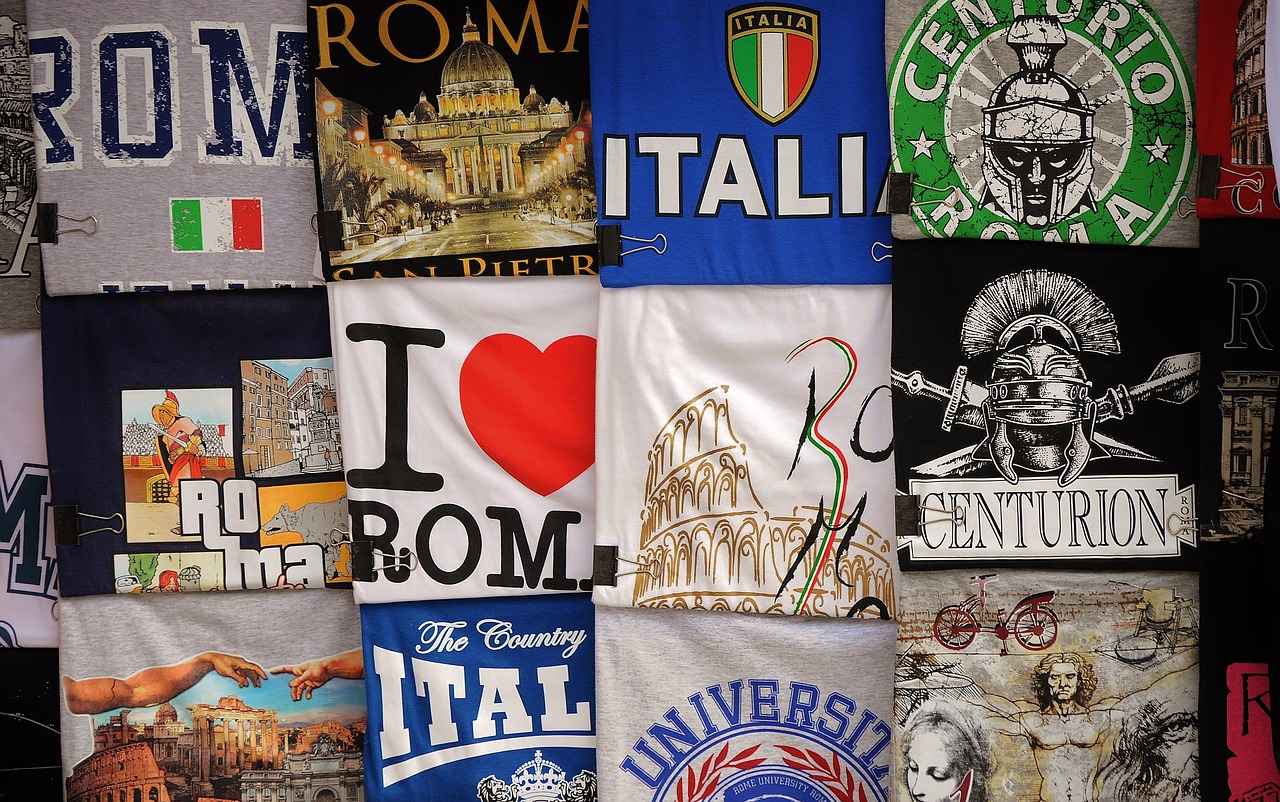
Finding the Right Custom T-Shirt Printing Service
is a critical step in ensuring the success of your custom apparel project. The right service can significantly impact the quality of your final product, as well as your overall experience. Below are essential factors to consider when selecting a printing service that meets your needs:
- Pricing: Cost is often a primary concern. It’s important to compare quotes from different providers. While it may be tempting to choose the cheapest option, consider the value you’re getting. Look for transparency in pricing and any hidden fees that may arise.
- Quality: The quality of the print and fabric can vary widely between services. Request samples to assess the print quality, color vibrancy, and fabric feel. High-quality prints will last longer and look better, enhancing your brand’s reputation.
- Turnaround Time: Depending on your project timeline, the speed of service can be crucial. Inquire about production times and whether they can accommodate rush orders if necessary. A reliable service should provide realistic timelines and meet deadlines consistently.
- Customer Service: A responsive and helpful customer service team can make a significant difference. Look for services that offer support throughout the ordering process, from design consultation to delivery. Positive customer interactions can enhance your overall experience.
- Reviews and Reputation: Conduct thorough research on potential printing services. Read customer reviews and testimonials to gauge their reliability and quality. A service with a strong reputation is more likely to meet your expectations.
In conclusion, the process of choosing the right custom t-shirt printing service involves careful consideration of pricing, quality, turnaround time, customer service, and reputation. By taking the time to evaluate these factors, you can ensure a successful project that meets your needs and exceeds your expectations.
Evaluating Quality and Reviews
is a crucial step in the process of selecting a custom t-shirt printing service. With numerous options available, understanding how to assess quality and customer feedback can significantly impact your final product. Below, we delve into essential factors to consider.
- Research Customer Reviews: Start by exploring online reviews on platforms like Google, Yelp, and social media. Look for consistent patterns in feedback regarding quality, service, and turnaround times.
- Request Samples: Before committing to a service, ask for samples of their previous work. This allows you to evaluate print quality, fabric comfort, and overall craftsmanship firsthand.
- Check for Certifications: Reliable printing services often hold industry certifications. These can serve as indicators of quality assurance and adherence to best practices.
- Evaluate Customer Service: A responsive and helpful customer service team is essential. Reach out with questions to gauge their willingness to assist and provide clarity on your concerns.
- Consider Turnaround Times: Assess the service’s ability to meet your deadlines. Efficient production timelines are vital, especially for events or promotional campaigns.
In addition to these factors, it’s important to analyze the overall customer satisfaction rate. Look for testimonials that highlight how the service handled issues or complaints. A company that values its customers will often go the extra mile to ensure satisfaction.
Ultimately, taking the time to thoroughly evaluate quality and reviews will lead you to a reliable custom t-shirt printing service that aligns with your needs. By prioritizing quality and customer feedback, you can confidently produce t-shirts that truly represent your vision.
Understanding Pricing Structures
When it comes to custom t-shirt printing, pricing structures can vary widely across different services. Understanding these variations is essential for making an informed decision that aligns with your budgetary constraints while ensuring quality is not compromised.
There are several common pricing models used in the industry:
- Per-Item Pricing: This model charges a fixed price for each t-shirt printed. It’s straightforward and ideal for small orders, but costs can escalate quickly with larger quantities.
- Bulk Pricing: Many services offer discounts for larger orders. This model is beneficial if you’re planning to print a significant number of shirts, as the cost per item decreases with volume.
- Setup Fees: Some companies charge a one-time setup fee for preparing screens or digital files. This fee can impact the overall cost, especially for small orders.
- Subscription Models: A few services offer subscription plans where you pay a monthly fee for a certain number of prints. This can be cost-effective for businesses needing regular printing.
To find a service that fits your budget without compromising on quality, consider the following tips:
- Request Quotes: Contact multiple printing services for quotes. This will allow you to compare prices and understand what is included in the cost.
- Check Reviews: Look for customer feedback regarding the quality of the prints and the service provided. This can give you insight into whether the pricing reflects the value.
- Ask About Materials: The type of fabric and inks used can significantly affect pricing. Ensure you inquire about these aspects to avoid unexpected costs.
In conclusion, understanding the various pricing structures in custom t-shirt printing is crucial. By evaluating your needs and comparing different services, you can find a solution that meets both your budget and quality expectations.
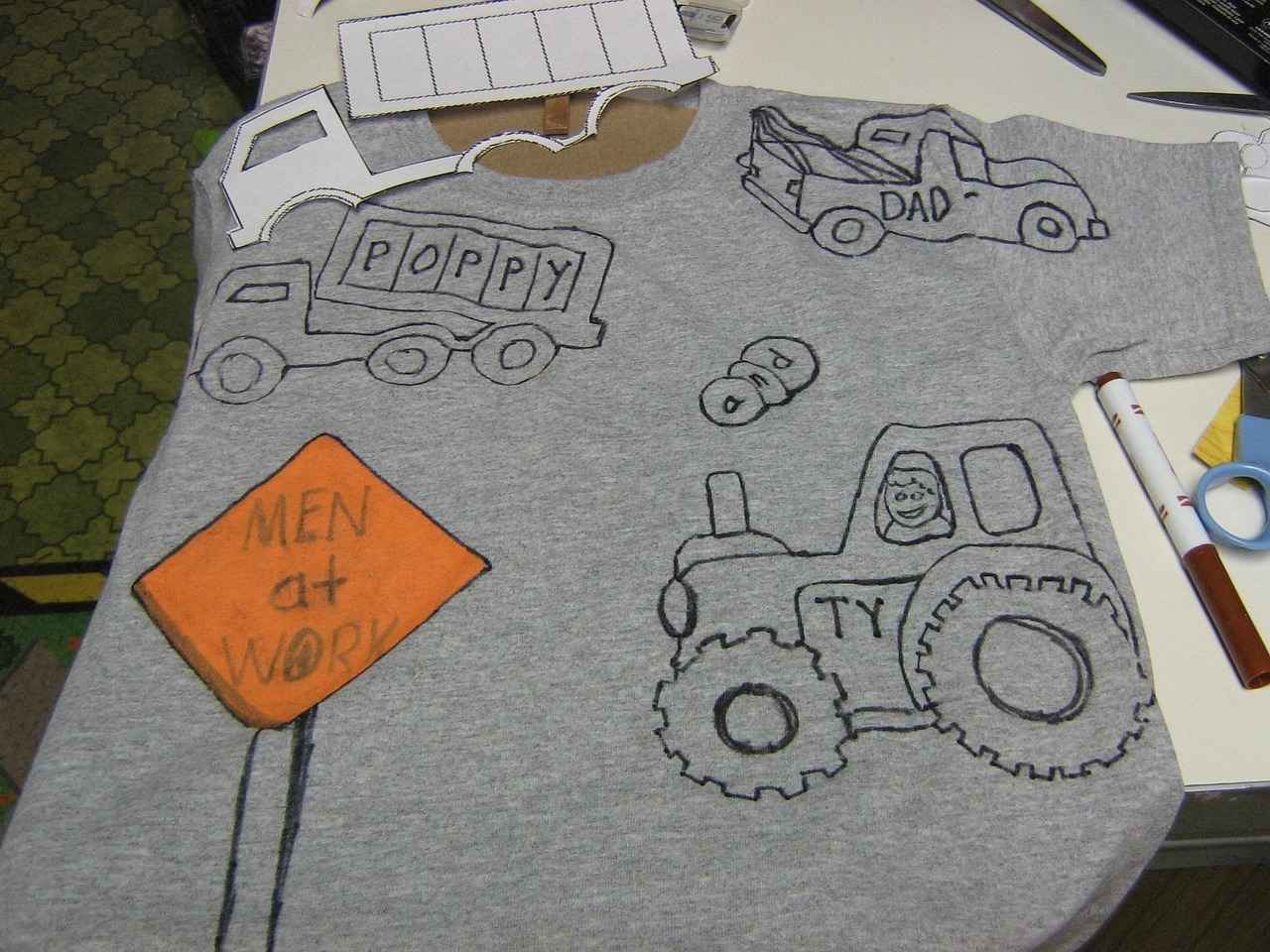
Conclusion: Making the Most of Your Custom T-Shirt Printing Experience
In the world of custom t-shirt printing, the opportunities for creativity and branding are virtually limitless. By leveraging various printing techniques, selecting the right materials, and utilizing professional services, individuals and businesses can produce eye-catching apparel that truly reflects their identity. Understanding these elements is essential to achieving designs that not only look great but also resonate with the intended audience.
Custom t-shirt printing allows for personal expression, whether it’s for a special event, a marketing campaign, or simply for personal enjoyment. The ability to create unique graphics, slogans, and images means that you can convey a message or an emotion effectively. From screen printing to direct-to-garment (DTG) methods, each technique offers distinct advantages depending on your specific needs.
Choosing the right fabric is equally important. Different materials, such as cotton, polyester, or blends, can affect the overall look and feel of the t-shirt. Cotton is known for its softness and breathability, making it a popular choice for casual wear, while polyester provides durability and moisture-wicking properties, ideal for athletic apparel.
When designing your custom t-shirts, consider color theory and typography. These elements play a crucial role in ensuring that your designs are visually appealing and communicate the intended message. A well-thought-out color palette can evoke emotions and attract attention, while clear, readable fonts enhance the overall design.
Finally, selecting a reliable custom t-shirt printing service is paramount. Look for services that offer quality materials, competitive pricing, and positive customer reviews. Taking the time to evaluate potential printing partners can significantly impact the success of your project.
In summary, by understanding the diverse aspects of custom t-shirt printing—from techniques and materials to design and service selection—you can maximize your creative potential and produce stunning t-shirts that leave a lasting impression.
Frequently Asked Questions
- What types of printing techniques are available for custom t-shirts?
There are several popular printing techniques, including screen printing, direct-to-garment (DTG) printing, heat transfer, and sublimation. Each method has its own advantages and is suited for different types of designs and quantities.
- How do I choose the right fabric for my custom t-shirt?
Your choice of fabric can greatly affect the look and feel of your t-shirt. Cotton is soft and comfortable, while polyester offers durability and moisture-wicking properties. Blends can provide the best of both worlds, so consider your needs carefully!
- What should I consider when designing my t-shirt?
Key design elements include color choices, typography, and layout. Understanding color theory can help you select colors that resonate with your target audience, while choosing the right fonts ensures your message is clear and engaging.
- How do I find a reliable custom t-shirt printing service?
Look for services with positive customer reviews and high-quality samples. It’s also important to evaluate their pricing structures and turnaround times to ensure they meet your project’s needs.
- Can I print on both sides of the t-shirt?
Yes! Many printing services offer double-sided printing options. Just be sure to check with your chosen provider about any additional costs or design limitations.
